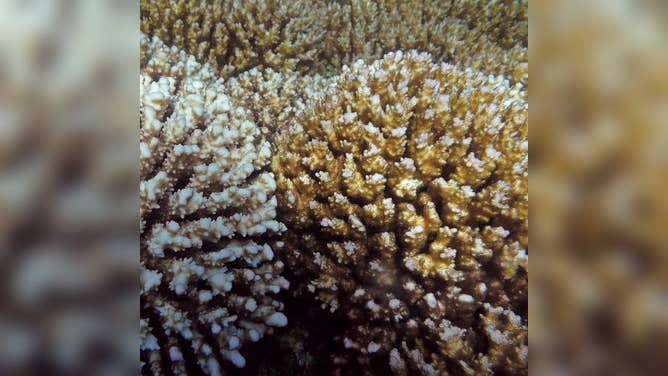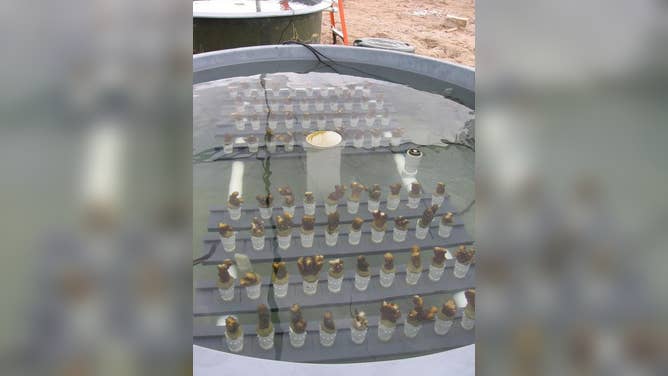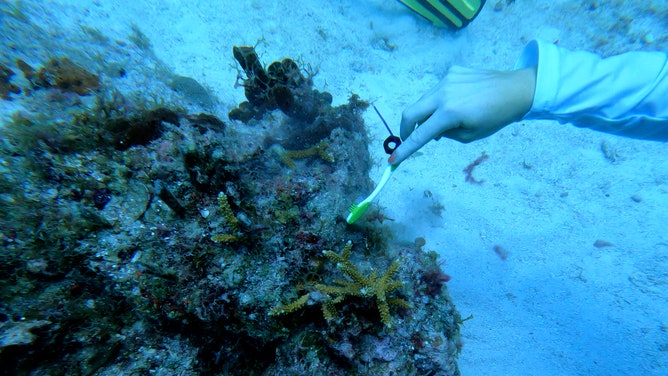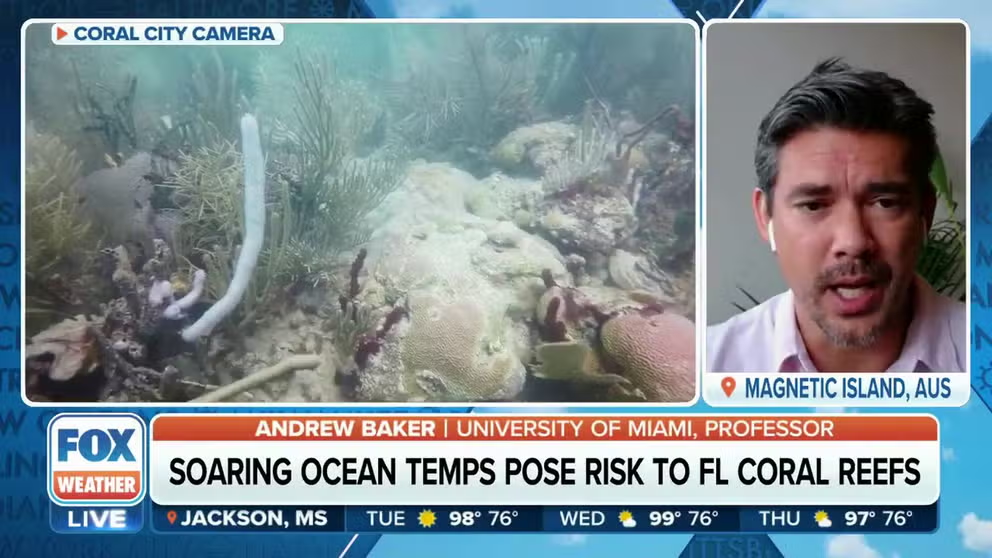There is still hope for coral reefs amid record-warm sea surface temperatures, studies show
Biologists are getting creative to save coral species threatened by warming sea surface temperatures. Coral bleaching events have been tied to El Nino years.
Warming ocean water threatens Florida's coral reefs
Marine life and coral reefs are facing a severe threat after continuous warming in the ocean. University of Miami professor Andrew Baker joins FOX Weather to talk more on the subject.
For decades biologists have been searching for ways to help coral reefs survive record-warm sea surface temperatures and a changing climate.
Corals have existed for millions of years through changing temperatures, but the next decades will be critical to see what species of coral survive through this next phase on Earth.
Dependent on microalgae known as symbionts that provide food and energy, coral reefs worldwide can experience mass bleaching events when sea surface temperatures rise by a few degrees above average. Most coral symbionts do not fare well in warm waters and begin to die off. In response, the coral starts ejecting the symbionts, and the corals lose their color. Some reefs can survive and recover from bleaching, but others cannot. It's an evolutionary game of survival of the fittest.
Several recently published studies examined ways corals might survive warming sea surface temperatures.

Corals that associate with D. glynnii (right) are at an advantage during extreme heat events compared to those associated with C. latusorum (left). (Image credit: David A. Paz-García/Penn State)
One idea is to help corals adapt, using symbiotic algae that are more tolerant to warm water. However, it was thought using different symbionts would make corals sacrifice nutrients and have adverse side effects. A newly published study in Proceedings of the Royal Society B found that corals with heat-tolerant symbionts grow and reproduce just fine.
Study co-author and Penn State biology professor Todd LaJeunesse explained why coral bleaching events have broader consequences.
"Oftentimes, a severe bleaching event will lead to mass mortalities, and then that has a cascading effect on the entire ecosystem," LaJeunesse said. "They start to crumble, and then all the habitat and the food that the coral provides to lots of other animals disappears. It has major ramifications."
UNUSUALLY HOT FLORIDA SEA SURFACE TEMPERATURES ON TRACK TO CAUSE MASS CORAL BLEACHING EVENT
The research team focused on Pocillopora corals in the Eastern Pacific because those are doing well.
"There are just fields and fields of it, and it's thriving and growing. It's like they're on steroids," LaJeunesse said. "They're in environments that are just really not conducive to healthy growth. And yet, in fact, they figured it out and in large part because of a different kind of symbiont species that they live with."
According to the study, a thermally tolerant D. glynnii symbiont sets these climate-hardy corals apart. To test the theory, biologists used the D. glynnii symbiont and the more sensitive C. latusorum symbiont in Pocillopora corals.
The team measured the coral mass increase, skeletal growth and reproduction.

The researchers studied measured skeletal growth, total mass increase and calcification rates — or the rate at which corals produce calcium carbonate, which is a measure of their growth — in controlled tank environments under different temperature regimes. (Image credit: Matthew Aschaffenburg/Penn State)
"We found that D. glynnii provided the capacity to endure water temperatures that compromise most coral-dinoflagellate mutualisms without noticeable tradeoffs," study lead author Kira Turnham said. "This partner combination grows and reproduces just as well as the more temperature-sensitive partnership."
According to LaJeunesse, previously, the idea was that these microalgae were using too much energy dealing with physiological stresses that they wouldn't put out as much energy for the coral. He said the difference comes down to evolution.
TRACKING THE HISTORIC RECORD-BREAKING TEMPERATURES AS HEAT WAVES BAKE SOUTHERN US
"In our case, we were working with an animal that's co-evolved over millions of years with these thermally tolerant symbionts," LaJeunesse said. "Evolution can fix a lot of things."
The researchers are continuing the next chapter of this study in the diverse coral reefs of Palau in the western Pacific Ocean.
According to LaJeunesse, the group's work in the Eastern Pacific can apply to more common and abundant coral ecosystems.
Worldwide effort to save coral reefs

I.Care divers are working to restore and maintain corals off the coast of Florida. (Image: Brandy Campbell/FOX Weather)
(FOX Weather)
Corals became the early "poster child of climate change," LaJeunesse said, when coral bleaching events made headlines in the early 1980s.
Efforts to save reefs around the world are ongoing in different forms.
In Florida, where sea surface temperatures have topped above 95 degrees near Key Largo, divers with I.Care are attempting to shift some reefs to help them survive what is expected to be a bad year for coral bleaching.
In another study, researchers at the Italian Institute of Technology and the University of Milan-Bicocca tested using a natural antioxidant substance extracted from turmeric on corals found in the Indian Ocean at the Genoa Aquarium. The research team said they were able to demonstrate using the biomaterial in waters up to 33 degrees Celsius (91.4 degrees Fahrenheit), which could cause coral bleaching, may help block the bleaching process.
"This technology is the subject of a patent application that has been filed, and in fact, the next steps of this research will focus on its application in nature and on a large scale," study co-author Marco Contardi said in a release.
Human efforts could help coral reefs, but it's also possible "life finds a way," LaJeunesse said, quoting "Jurassic Park."
What form these reefs take is what's unknown. Ultimately the demise of these ecosystems will impact humans, who rely on the reefs for fishing, economy and hurricane barrier protection.
"Life will eke out an existence," LaJeunesse said. "How functional it's going to be, we don't know. Will it provide the goods and services that a healthy reef today or decades ago will do? Who knows?"
